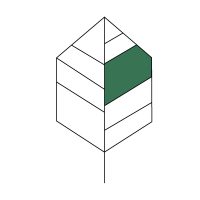Fertilizer
In my previous blogpost, Plant Newbie: Plant 101, I mentioned that a plant’s basic requirements are:-
-
Sunlight – Determine bright indirect spot to place your plant.
-
Water – Determine watering schedule and amount of water.
-
Fertiliser – Feed your plants.
-
Instinct – Get to know your plants.
Let’s focus on fertilising your plant. Fertilising plays a crucial part of plant maintenance to keep your plant healthy, happy and super green, especially for potted plants.
When plants are planted in a pot, it needs our help to provide not only water and sunlight, but also fertilising as roots are bound in a pot. naturally when planted in the ground, roots will be able to extract water and nutrients on their own without much dependance on us.
Soil in pots will be depleted of all nutrients about 1-2 years. Which is when your plant will start to look sickly and immune system will be weakened without proper nourishments of nutrients as it’s roots are not receiving enough nutrients to thrive. The plant will also not grow as big as compared to plantings in the ground (think bonsai).
The 3 primary components of fertiliser your plants need are:
-
N: Nitrogen
Responsible for leaf growth and making plants greener.
-
P: Phosphorus
Promotes root growth and encourages bloom and fruiting.
-
K: Potassium
Responsible for strong immune system to fight off diseases and pest.
Ratio of fertilising
Basically, look for a ratio number on fertiliser packets.
For example: NPK 10-10-10, this means the ratio for N = 10, P = 10, K = 10.
Or NPK 15-10-10 is N = 15, P = 10, K = 10
Types of fertilising
There are a few methods of fertilising, which includes concentrated liquid fertiliser, diluted fertiliser, fertilising granules or pellets. Any kind of fertiliser will be good as long as there is nourishment for your plant.
Fertiliser on our website is concentrated liquid fertiliser.
We picked this fertiliser because liquid fertilising has a quicker absorption rate through the pebbles on the top soil.
How to fertilise?
Fertilising is super easy. Once a month, dilute 1 capful of fertiliser to 1 litre of water and water accordingly as your usual watering schedule and amount of water to your plant 🙂
Organic / Natural Fertilising to give a try!
-
Rice water when washing rice.
-
Potato water after boiling potatoes.
-
Throw in orange peel and banana peel into your pots (compost)
-
Epsom Salts diluted in water is said to encourage greener leaves.

Leave a Reply